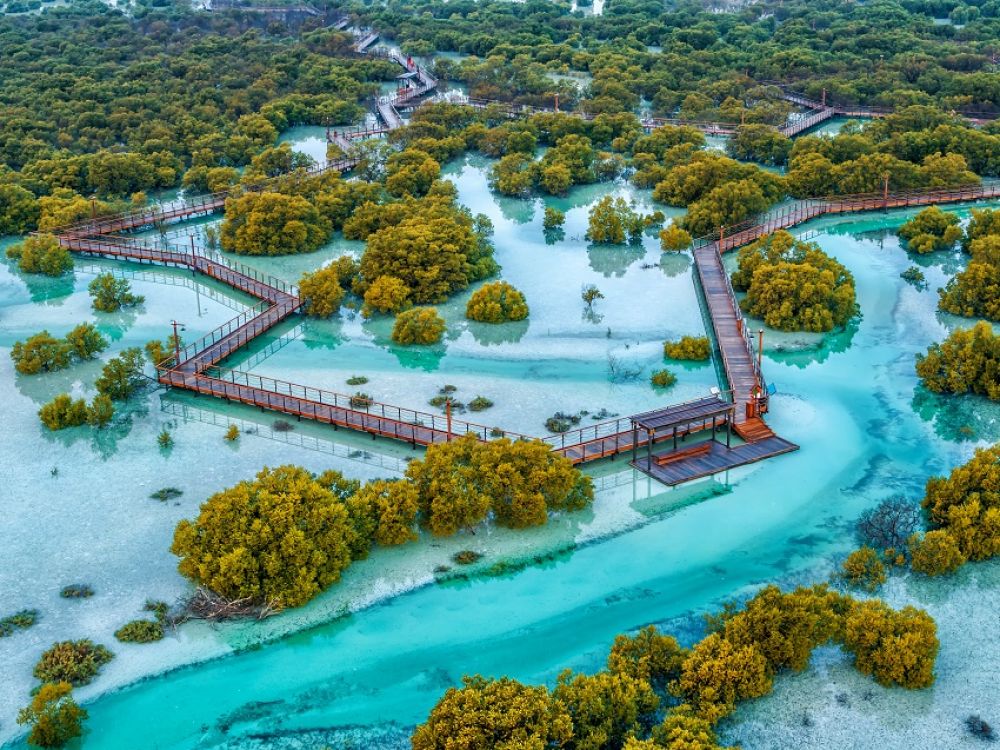

The fascination with the natural landscapes of the United Arab Emirates has a long history, but the transition to a recognized tourist destination, especially in terms of conservation areas like the Mangrove Marine National Park, is a relatively recent development. With the rapid urbanization and development of Abu Dhabi, the government acknowledged the importance of preserving its natural habitats and subsequently initiated efforts to protect the mangrove ecosystems.
Mangrove Marine National Park was established to safeguard the biodiversity of the mangrove forests that are crucial to the coastal ecology. Mangroves are known for their ability to protect shorelines, provide habitats for wildlife, and filter pollutants, thus maintaining environmental health. The UAE's increased focus on ecological tourism and sustainability has elevated the profile of this park in recent years.
As environmental awareness grew globally, so did the realization of mangroves' importance. By the early 21st century, the UAE had begun to market its natural wonders as key tourism destinations. The development of eco-tourism initiatives, such as the kayaking tours through the park's waterways, have made it a popular destination for both educational and recreational activities.
The latest trends in tourism for the Mangrove Marine National Park reflect a global shift towards responsible and eco-friendly travel. Visitors are increasingly interested in experiences that offer both recreation and educational opportunities, with a strong emphasis on sustainability. The park has adapted by offering guided tours, boardwalks for nature observation, and informative materials on the significance of mangrove ecosystems.
Additionally, the rise of social media has changed the way destinations like the Mangrove Marine National Park are experienced and shared. Instagrammable spots are sought after, and thus the park's serene natural beauty serves as a backdrop for many travelers' photos.
With the ongoing pandemic in recent history, there has been a notable surge in the preference for outdoor activities. The spacious and open environment of the park provides an ideal setting for visitors to enjoy nature while adhering to social distancing norms.
To meet these evolving expectations, the Park continually enhances visitor services and infrastructure to balance increased human activity with the protection of the mangroves. This includes measures to minimize the ecological footprint of tourism, thus safeguarding the park's health and beauty for future generations.